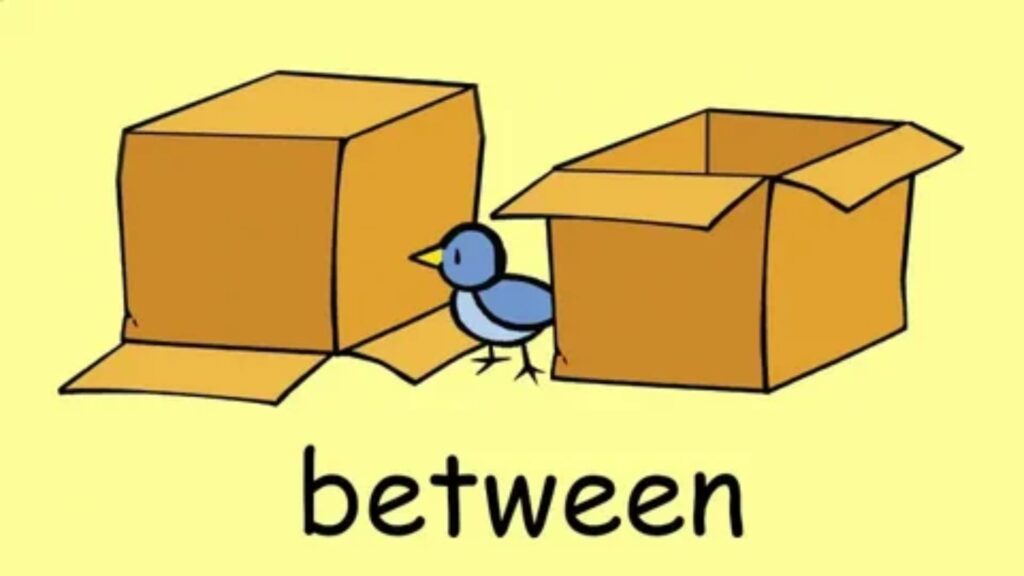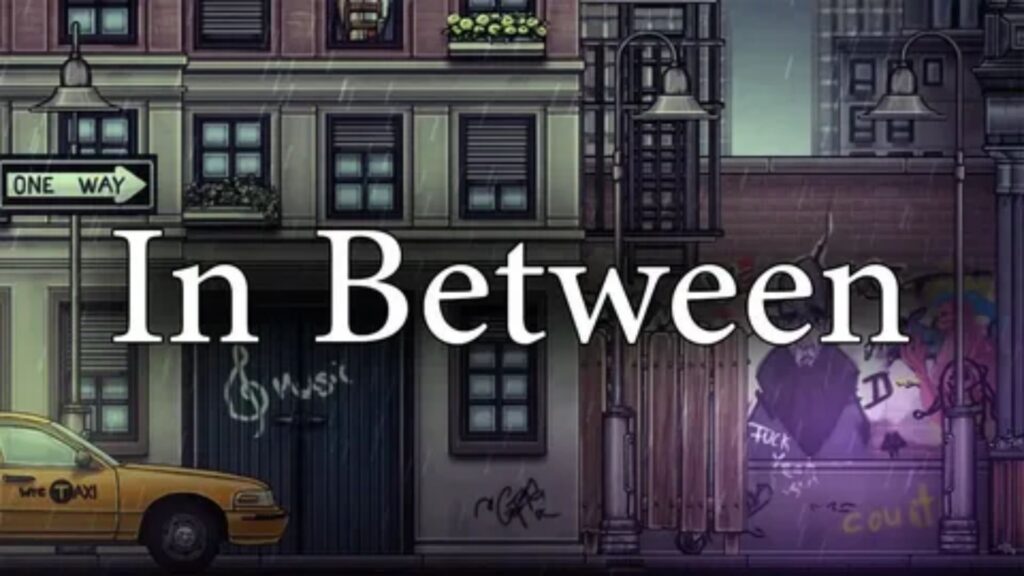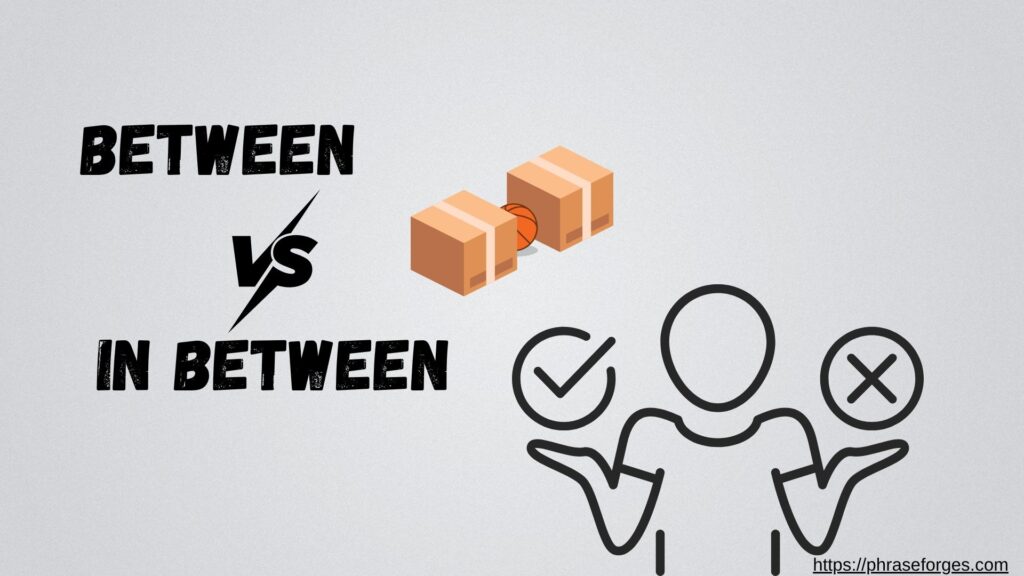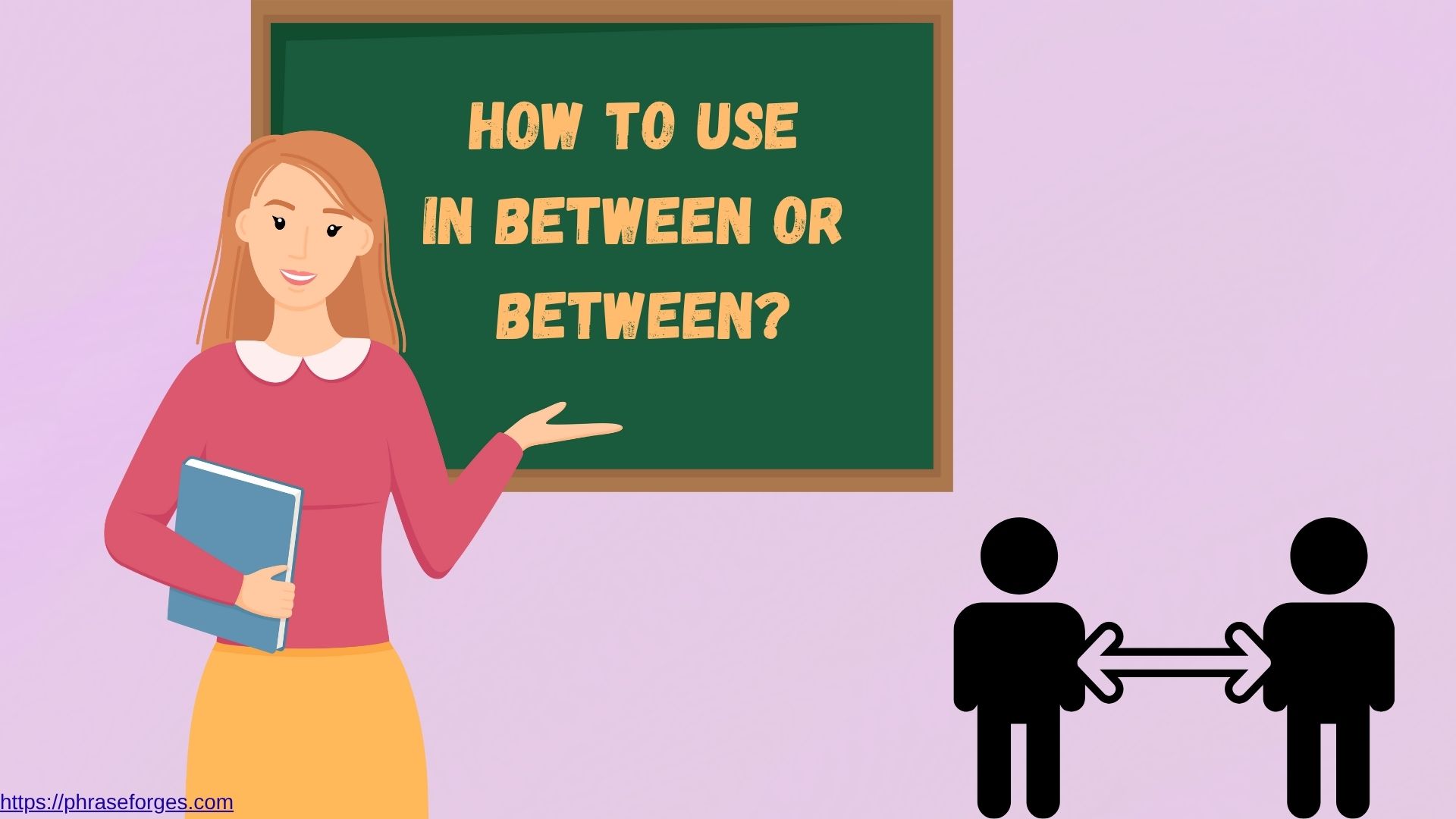Understanding the difference between “in between” and “between” can enhance your communication skills and make your writing clearer. This article delves into the definitions, usage, and examples of both phrases, helping you choose the right one for your sentences.
Definitions
“Between”

The word “between” is a preposition that indicates a position or location separating two entities. It refers to the space or time that separates two specific points or objects. For instance, you might say:
- “The coffee shop is between the bank and the grocery store.”
In this example, “between” clearly indicates the coffee shop’s location relative to the bank and grocery store.
“In Between”

“In between,” on the other hand, typically implies being situated in the middle of two things but often carries a more nuanced meaning. It can convey a sense of something being temporarily or conditionally in that middle space. For example:
- “She felt in between her childhood and adulthood.”
Here, “in between” suggests a transitional phase, emphasizing the complexity of the experience.
When to Use “Between”
Using “between” is straightforward when you’re discussing two distinct items or people. Let’s look at some scenarios:
Email Scenario
Imagine you’re coordinating a meeting with a colleague. Here’s how you might use “between”:
Subject: Meeting Coordination
Hi Sarah,
I’d like to schedule our meeting between Tuesday and Thursday next week. Do either of those days work for you?
Best,
John
In this email, “between” clearly indicates the two days being considered for the meeting, making it easy for Sarah to understand your availability.
Everyday Conversation
In a casual conversation, you might say:
- “I can’t decide between tea and coffee.”
This example illustrates a clear choice, showcasing the use of “between” with two options.
When to Use “In Between”
Using “in between” can add a layer of meaning beyond just location. It often reflects a state of transition or ambiguity. Here are some examples:
Email Scenario
Let’s say you are writing to a friend about a tough situation. You could express it like this:
Subject: Feeling Stuck
Hey Mike,
I’ve been feeling a bit in between jobs lately. It’s tough not knowing what my next step should be. Any advice?
Cheers,
Emily
Here, “in between” captures Emily’s transitional state, giving her message a more emotional depth.
Everyday Conversation
You might say:
- “I’m in between projects right now.”
This indicates not just a location but a transitional phase in your work life, suggesting that you’re awaiting new opportunities.
Key Differences in Usage

Specificity vs. Ambiguity
“Between” is more precise, while “in between” adds a layer of context or emotion. Here’s a quick breakdown:
- Between: Used for clear distinctions or choices.
- In Between: Suggests a transitional or ambiguous state.
Examples in Context
To further clarify, let’s consider both phrases in a similar context:
- Between: “The meeting is scheduled between 2 PM and 3 PM.”
- In Between: “I’ll be in between meetings, so I might be slow to respond.”
In the first sentence, the use of “between” is straightforward and specific. In the second, “in between” conveys a feeling of being caught in the middle, implying a potential delay.
Common Mistakes
Many people confuse “in between” and “between,” especially in informal writing. Here are a few pitfalls to avoid:
- Overusing “In Between”: You don’t always need to use “in between.” For example, saying “I live in between New York and Boston” is incorrect. It should be, “I live between New York and Boston.”
- Using “Between” for More Than Two: Remember, “between” typically refers to two entities. If you’re discussing three or more, use “among.”
Practical Tips for Choosing the Right Phrase
Consider Context
When deciding which phrase to use, think about the context. Are you discussing a clear choice or a transitional phase?
- If it’s a clear separation or choice: Use “between.”
- If it’s a transition or ambiguity: Use “in between.”
Read Aloud
Sometimes reading your sentence aloud can help you decide which phrase sounds more natural.
Conclusion
Using “in between” and “between” correctly can greatly enhance your writing. Remember, “between” indicates a clear separation, while “in between” reflects a state of transition or ambiguity. By keeping these distinctions in mind and practicing through real-life scenarios, you’ll become more confident in your language skills.
So, next time you find yourself at a crossroads in your writing, ask yourself: Am I referring to a specific separation, or am I capturing a moment of transition? This simple question can guide you to the right choice. Happy writing!

